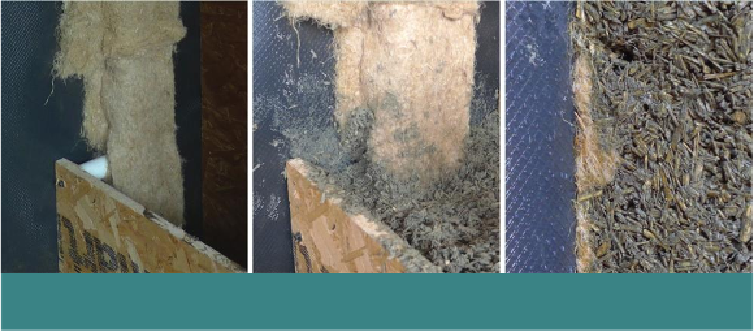Civil Engineering Reference
In-Depth Information
Using hemp-fibre insulation to create airtightness at a junction between hempcrete and an existing
wall.
Joining to the hempcrete is more difficult than to the timber, since the hempcrete may
shrink back from the wall very slightly as it dries. For this reason, whatever is used to fill
the gap needs to be able to withstand the initial damp environment and remain 'springy'
enough to fill any gap caused by the hempcrete drying.
A natural, springy, fibrous insulation such as wood-fibre (or hemp- or flax-fibre) quilt in-
sulation fits the bill nicely. The width of this insulation should be cut down to the size
necessary for the following to be achieved. The insulation should be stapled to the three
remaining visible sides of the stud (the sides of the stud facing into the void for the hemp-
crete wall), so that when the hempcrete is placed it can be pushed up against the insulation,
and the insulation compressed between the hempcrete and the masonry wall. One edge of
the insulation quilt should be close up to the internal shuttering board, and the other edge
should sit back at least 70mm inside the external face of the wall, if this is not to be protec-
ted with a rain screen such as in the form of cladding. (These types of insulation are able
to act as an effective moisture buffer, but since they are not recommended for external use,
it is prudent to respect this minimum distance from the external surface.)
The springy insulation quilt will be compressed down, for example from 40mm thickness
to less than 5mm, so any shrinkage of the hempcrete will be easily taken up by the insula-
tion material expanding to fill the gap.
This solution can also be applied to the junction between hempcrete roof insulation and an
existing masonry wall.

Search WWH ::

Custom Search